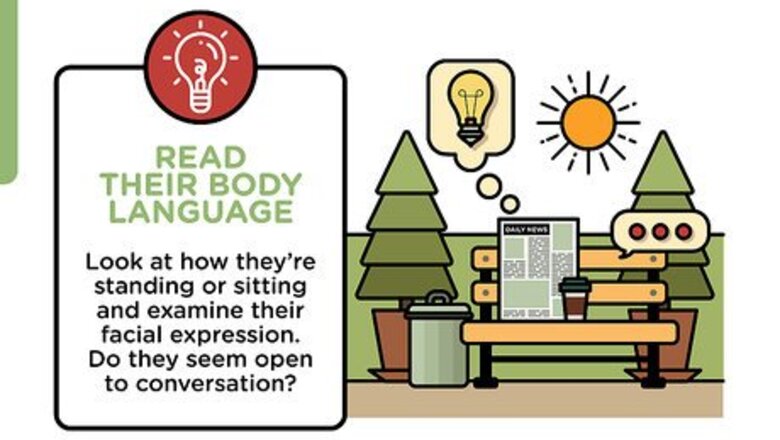
views
Making Introductions
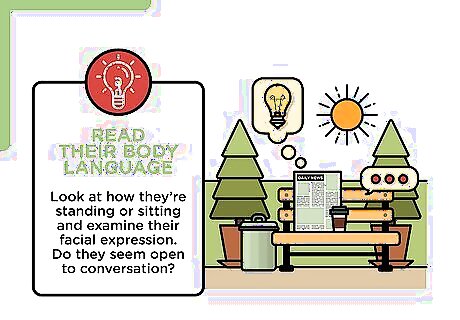
Read their body language. Before you walk up and start chatting with a complete stranger, get the full picture. Make sure now’s the right time to approach them by checking out their nonverbal cues. Look at how they’re standing or sitting and examine their facial expression. Do they seem open to conversation? For instance, if someone is hunched over with their arms crossed and a frown on their face, you might want to keep walking. However, if they are in a relaxed position and appear generally upbeat, they may be interested in talking to you. Even once the conversation gets going, you should continue to check out the other person’s body language to know if you should change topics or end the interaction.
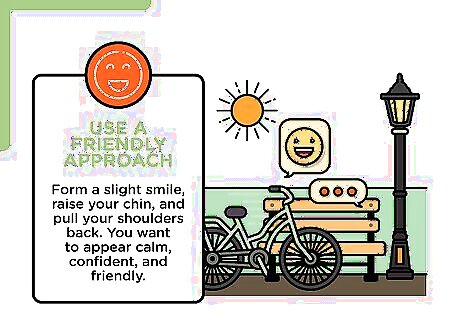
Use a friendly approach. If you decide to greet the person, use open and positive body language. Turn to face them. Form a slight smile, raise your chin, and pull your shoulders back. You want to appear calm, confident, and friendly.
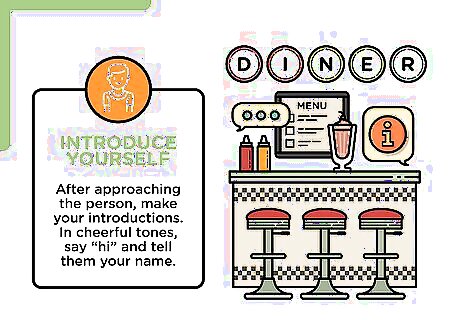
Introduce yourself. After approaching the person, make your introductions. In cheerful tones, say “hi” and tell them your name. Then, make an observation that is shared between you and the person (a technique commonly referred to as “triangulation”) to get the conversation rolling. You might say, “Hi, I’m Dan. I see you’re waiting for Mrs. Dorchester. Have you been waiting long?” Another great way to add to your introduction is by offering a genuine compliment, such as “I like your haircut.”
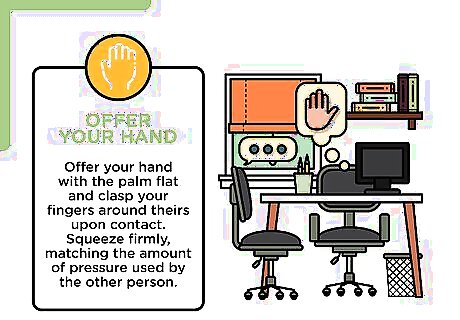
Offer your hand. To seal the deal, present your right hand so the other person can shake it. Offer your hand with the palm flat and clasp your fingers around theirs upon contact. Squeeze firmly, matching the amount of pressure used by the other person. Why is shaking their hand important? The moment you make contact with them your brains send out signals that enhance your bond.
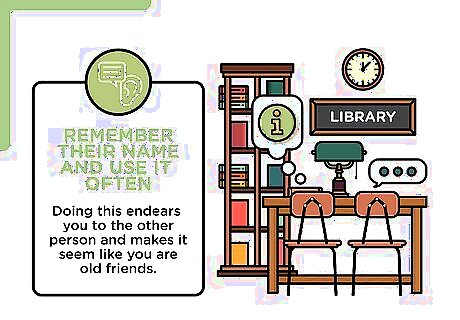
Remember their name and use it often. When the other person tells you their name, commit it to memory and use it in the conversation. Doing this endears you to the other person and makes it seem like you are old friends. For instance, you might say, “So, Pam, what brings you here tonight?” right after the person tells you their name. Later, you might use their name again by saying, “What’s your favorite type of music, Pam?” To easily remember their name, connect their name to a characteristic you’ve learned about them. For example, you might think to yourself “Pam is wearing a purple sweater” or “Joe likes jazz.”
Having a Conversation
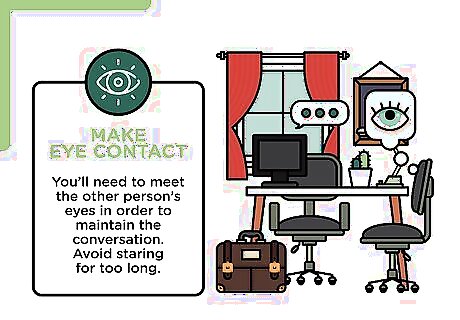
Make eye contact. Friendly interactions don’t occur with two people looking opposite ways. You’ll need to meet the other person’s eyes in order to maintain the conversation. Find a good balance, though: avoid staring for too long, but also don’t completely avoid the other person’s gaze. In general, make more eye contact when you are talking than when you are listening.
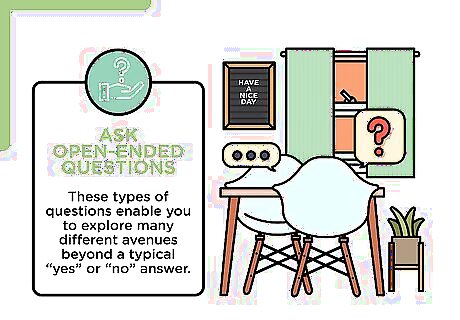
Ask open-ended questions. Certain questions shut down conversations while others keep them going. If you want to talk to someone you’ve never met, strike up a conversation by asking an open-ended question. These types of questions enable you to explore many different avenues beyond a typical “yes” or “no” answer. Open-ended questions usually start with what, how, or why, such as “How do you know Tabitha?”
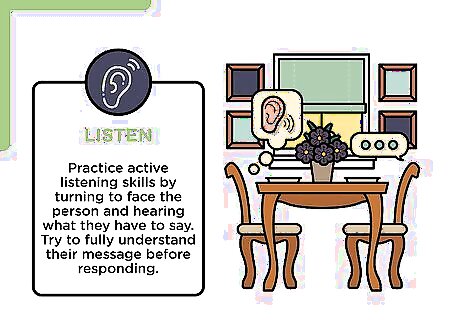
Listen. If you’re going to ask someone a question, you need to show that you’re willing to listen to the answer. Practice active listening skills by turning to face the person and hearing what they have to say. Try to fully understand their message before responding.
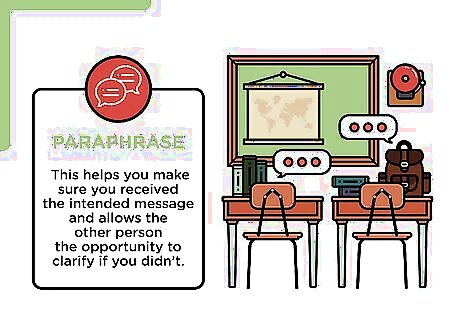
Paraphrase. Show the person that you were listening by paraphrasing what they said. This helps you make sure you received the intended message and allows the other person the opportunity to clarify if you didn’t. You can paraphrase by saying something like “So, it sounds like…” or “If I’m hearing you right…”
Maintaining the Interaction
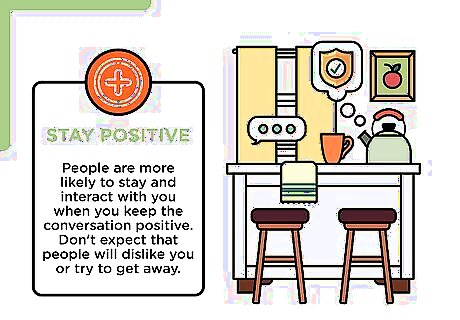
Stay positive. People are more likely to stay and interact with you when you keep the conversation positive. Don't expect that people will dislike you or try to get away. Keep the conversation positive, and keep yourself friendly and approachable. Even if you feel nervous or don't have the best self-esteem, try to come off as confident. Trying to back out of a conversation or coming off as fearful will make others want to leave the conversation early. If you're nervous, fake it until you make it.
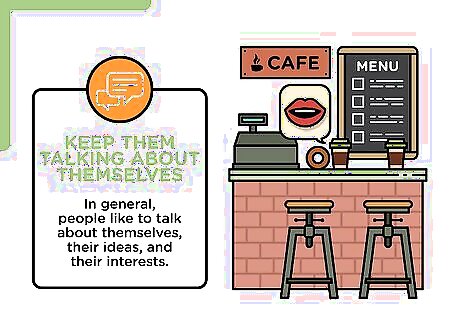
Keep them talking about themselves. For most people, once they see that you’re willing to listen, they can talk for hours. In general, people like to talk about themselves, their ideas, and their interests. Use this knowledge to your advantage and keep the focus on the other person. Show an interest in what they are saying by nodding or responding with comments like “Really?”
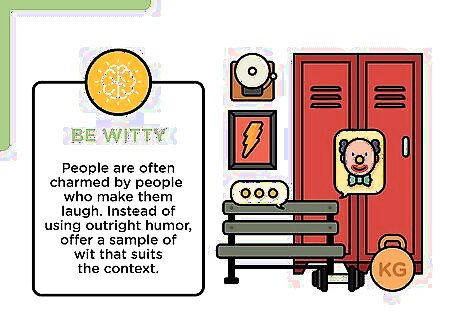
Be witty. People are often charmed by people who make them laugh. However, they may not want to sit there and listen to joke after joke. Instead of using outright humor, offer a sample of wit that suits the context. For example, if the two of you are waiting, you might casually say, “Gee, if I’d known the wait would be so long, I would have packed a picnic lunch. If you hear my stomach growl, forgive me.”
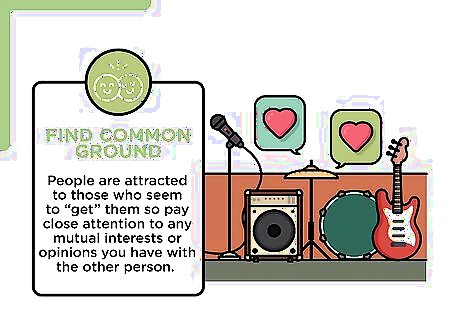
Find common ground. People are attracted to those who seem to “get” them so pay close attention to any mutual interests or opinions you have with the other person. Use this common ground to emphasize how you are alike and build a stronger connection with the other person. For example, you might say, “I feel the same way!” or “How ironic? I grew up in a small town, too.”
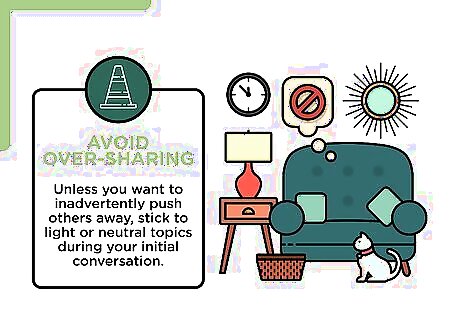
Avoid over-sharing. Unless you want to inadvertently push others away, stick to light or neutral topics during your initial conversation. Although it’s perfectly acceptable to make a major disclosure with a close friend, it’s frowned upon to do the same with a virtual stranger. Over-sharing tends to make others uncomfortable. It would be considered inappropriate, for instance, to tell a person you just met that you are dealing with a troubling medical condition. Don't be afraid to show some vulnerability about subjects that naturally come up. This can help build trust. Sharing too much information all at once, though, can be off-putting.
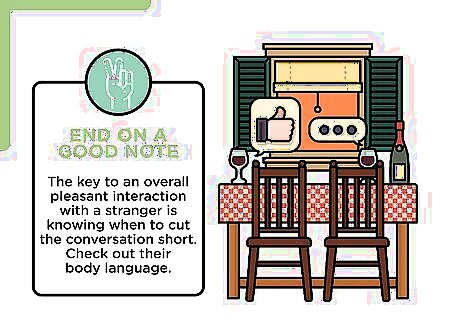
End on a good note. The key to an overall pleasant interaction with a stranger is knowing when to cut the conversation short. Check out their body language. Are they turning away from you or seemingly distracted by their phone or a book? If so, this might be a signal to part ways. Be sure to end the conversation in a positive light. For instance, even if things started to become awkward or quiet, it might be nice to make your exit by reminding the person of your connection. Say something like, “It was nice meeting you, Joy. I hope you think of me the next time you eat rocky road ice cream.”

















Comments
0 comment